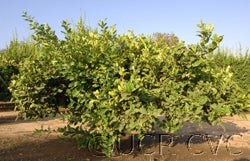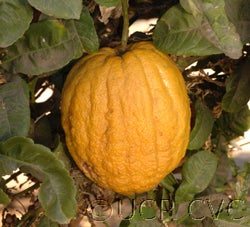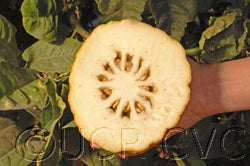Citrus medica L.
CRC 2847
PI 105957
Source
Received as budwood from the Bureau of Plant Introduction, 1934.
Parentage/origins
Donated by S.H. Holzman, Rehovot, Central, Israel.
Rootstocks of accession
Yuma Ponderosa lemon
Season of ripeness at Riverside
November to January
Notes and observations
3/16/1989, EMN: This variety is used for religious purposes; the fruit is sweet and has a pleasant flavor. Medium size on average, size varies from small to large. Shape irrigular, most fruits elongate, many with pointy nose. Yellow rind, matures late. Rind rough; fluted, especially at apes. Rind very thick; strips of rind albedo connect around seeds to solid central core; no juice vesicles. Seedy. Flavor of albedo is sweet but very mild--almost flavorless. This could be described as a "dry" citron.
12/5/2006, DK & TS: Most notably, has many seeds but no juice vesicles in the segments, which are separated by strips of albedo. Rind thick, sweet.
Availability
Not commercially available in California.
USDA Germplasm Resources Information Network page for Yemen citron


